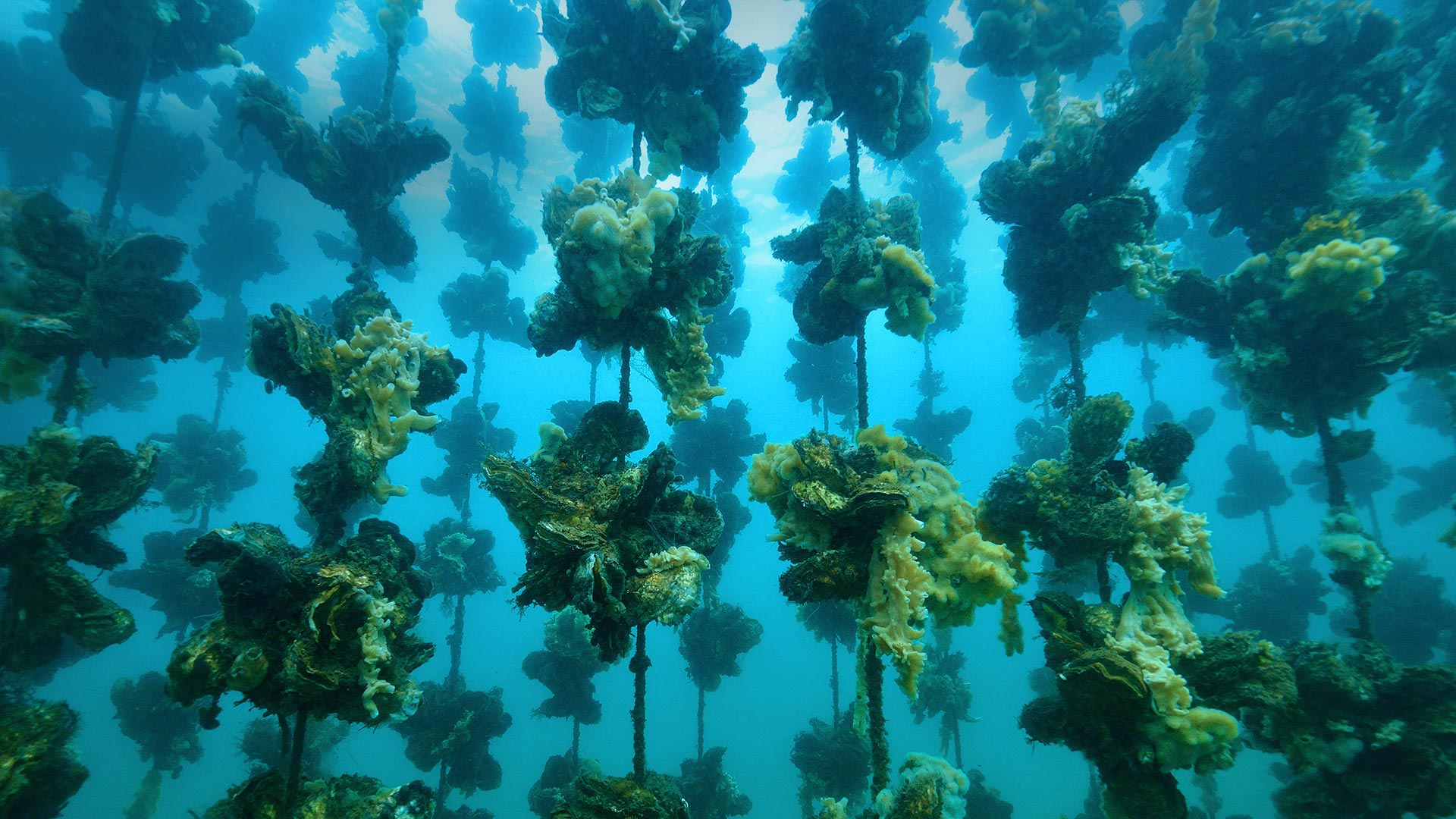Notojima岛附近的牡蛎养殖场,日本石川县 Oyster farm offshore from Notojima Island, Ishikawa Prefecture, Japan (© divedog/Shutterstock)

Notojima岛附近的牡蛎养殖场,日本石川县 Oyster farm offshore from Notojima Island, Ishikawa Prefecture, Japan (© divedog/Shutterstock)
Aw shucks, It's Oyster Day
It may look like we've led you into a squishy green minefield, but don't worry, these clustered oysters will only explode with flavor. In honor of Oyster Day, August 5 of each year, we're getting a glimpse of just one method of oyster mariculture, or farming in open seawater. The briny bivalves may be grown on beds, rods, racks, or—in this case—ropes, but the basic process is simple: Growing surfaces are 'seeded' with whole or ground oyster shells before oyster larvae are introduced. The shells attract the larvae, which attach themselves and soon grow into a new layer of mature oysters. Humans have been doing this at least since the days of ancient Rome, but wild-picked oysters have been an important food source to many cultures since prehistory.
Oysters also played an important role in US history, and could impact the future of our biggest city: Until the 1800s, New York Harbor was home to a trillion or more oysters, possibly half the world's supply. Naturally growing on craggy, reeflike beds on the harbor floor, they formed strong barriers against swelling storms. By the 20th century, overharvesting and pollution had decimated New York's oyster population. When Hurricane Sandy hit the NYC region in 2012, it highlighted the city's vulnerability to extreme weather, especially as ocean levels continue to rise. Since then, initiatives have aimed to seed new beds with oyster shells, many collected from local restaurants.